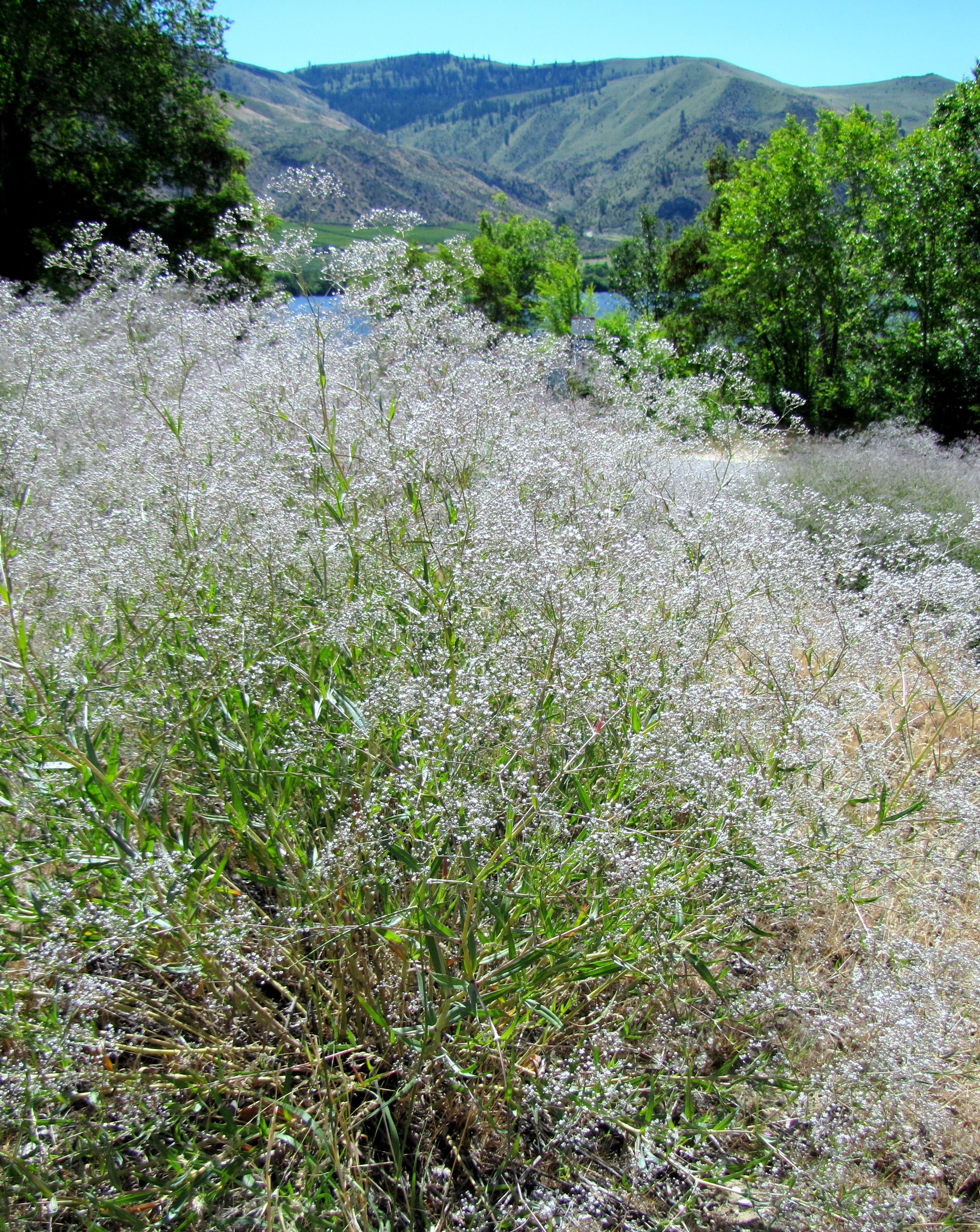Babysbreath
Gypsophila paniculata
Description
Baby's breath is a much-branched perennial herb growing up to 2.5 feet in height. The plant has a large, deep taproot that allows it to grow well in dry and poor soil conditions. Baby's breath has branched clusters of many small flowers. Flowers have 5 white petals and 10 stamens. Leaves are opposite, narrow and are covered with a dense bloom of hairs on both sides. Stems are upright or ascending at the base and single to many in number. Flowers form capsules that contain small black seeds, 0.06 to 0.08 inches (1.5 to 2.0 mm) long. The seeds can germinate in 10 to 15 days and plants grow rapidly. Each plant can produce 10,000 or more seeds, which are spread when the branches dry, break off and are moved in the wind similar to Russian thistle and kochia.
Origin and Distribution
Baby's breath, Gypsophila paniculata, is an ornamental species that has escaped cultivation and invades rangeland, pastures and disturbed sites. Once established it forms dense stands and very difficult to control.
Management Information
Physical Control – Manual/Mechanical Methods
Suppressing the root system and preventing seed production is the management goal for established plants. Hand pulling mature baby’s breath plants is difficult. The root system must be severed below the thickened crown and rhizome. This may require digging to a depth of 6 inches to 1 foot. Regrowth is usually rare if the complete crown and rhizome are removed.
Plants regrow following mowing. Plants can tolerate shallow infrequent tillage, but plants rarely persist in fields that undergo frequent deep tillage.
Biological Control – Insects/Pathogens
No biological control agents or pathogens are available for this weed.
Herbicide Control
Due to the variance in soils, vegetation etc. All herbicide recommendations are made based upon the specific site. Please call our office for specific recommendations. 509-634-2338
Please visit NWCB for more information on this weed.

